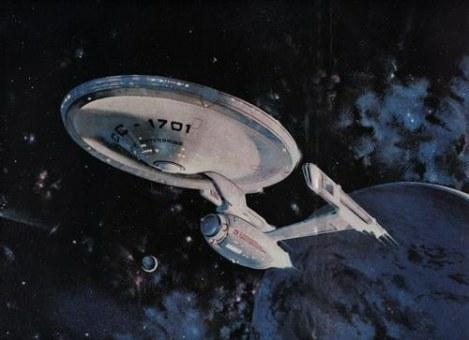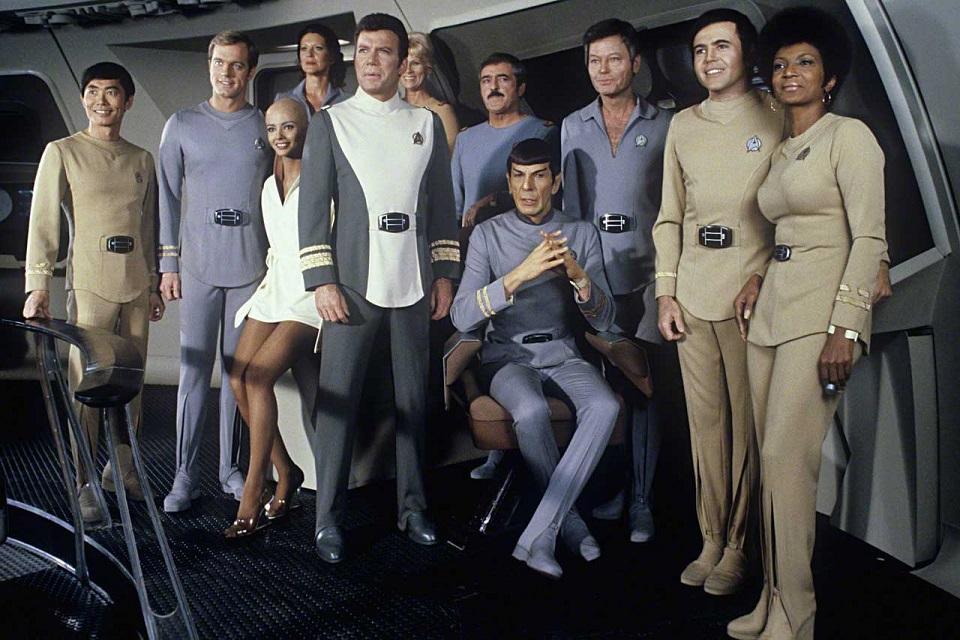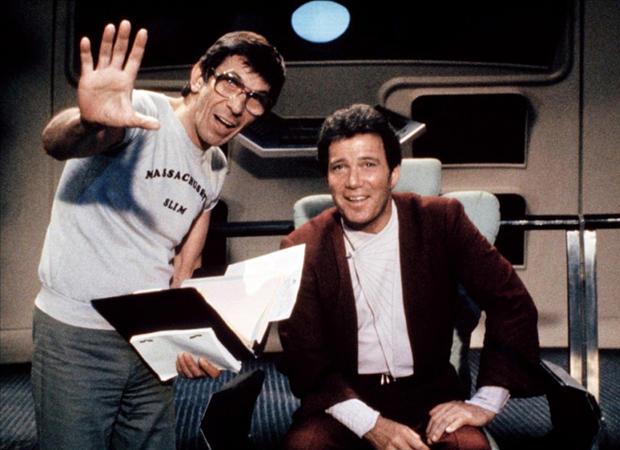From failed series to box office champ: The return of ‘Star Trek’
Part 2 of 3
With “Star Trek Beyond” currently in cinemas and the recent unveiling of an upcoming TV series at San Diego Comic Con, we continue our look at the 50th anniversary of the sci-fi mainstay.
Read Part 1 here: Beyond the Final Frontier: ‘Star Trek’ at 50
_was_reduced_to_consultant_on_the_sequels_2016_08_07_16_16_18.jpg)
In the 1975, talks were underway to create a low-budget film to serve as a continuation of “Star Trek” (“The Original Series”), thanks to the inexplicable second life the series had found in syndication.
For Gene Roddenberry, this was great news, as his efforts at following up his most popular creation had been somewhat less than successful. Furthermore, thanks to his ongoing networking with fans and regular presence on the burgeoning pop culture convention scene, he was well aware of the potential that lay in a “Star Trek” revival.
When numerous scripts were rejected by Paramount Television (which now owned “Trek” after purchasing original production company Desilu in the late 60s), the game-changing release of “Star Wars” in May 1977 led studio officials to believe that cinema goers would not pay to see more than one major science fiction franchise in cinemas. Thus, the “Star Trek” film they’d been developing for two years would now be a TV series. Dubbed “Star Trek: Phase II”, the show would serve as the flagship program of Paramount’s then-radical idea to create a new TV network to compete with the existing NBC, CBS, and ABC.
Numerous concepts for “Phase II” were bandied about, especially when it became unclear which members of the original cast would return. Leonard Nimoy, who had played the stoic Mr. Spock, for instance, had been acting steadily since the cancellation of “The Original Series”, and saw no need to return to the role. As sets and costumes were designed and actors auditioned for lead roles (to act alongside returning cast members), Roddenberry worked on writing the pilot episode with an eye towards reintroducing the franchise.
This would all be rendered moot when, in 1978, Paramount’s plans to create the United States’ fourth TV Network were scrapped due to an inability to secure advertisers.

At the same time, too much money had already been spent on the development of “Phase II”, and its potential was seen as being too great to sell the concept off to anyone else. Fortunately, the runaway success of Steven Spielberg’s “Close Encounters of the Third Kind” in November 1977 was enough to convince Paramount execs of moviegoers’ appetite (i.e. willingness to pay) for new science fiction adventures.
In 1978, the word was given: Paramount’s “Star Trek’s” revival would reunite the entire Original Series” cast and budgeted at US $15 million dollars (compared to “Star Wars’” cost of US$11 million).
The film would be brought to the big screen under the auspices of no less than Robert Wise, the A-list director behind classics such as “The Day the Earth Stood Still,” “West Side Story,” and “The Sound of Music.”
Conceived as a prestige science fiction event, “Star Trek: The Motion Picture” was intended as a thought-provoking expansion of the “Original Series”, holding more in common with the likes of “2001: A Space Odyssey” and “Solaris” than “Star Wars”. What this “Trek” would have in common with George Lucas’ blockbuster, however, would be state of the art visual effects that would have been impossible to realize in the 1960s.
Besieged by behind-the-scenes squabbles, an out-of-control budget (which eventually reached US $45 million), and a script that was constantly being rewritten, “Star Trek: The Motion Picture” was a film that, by all rights, should have been a flop. Released in December of 1979, what reached cinemas was a bloated, plodding film that had barely gotten past the editor’s initial cut and didn’t even have a complete sound mix in place. But with the release date set in stone after too many false starts, Paramount had no choice but to run with what they had and hope for the best.

To the astonishment of industry insiders, the Enterprise crew’s first foray onto the big screen was a massive hit, breaking the December opening weekend record set by “Superman the Movie” the year before. Despite lukewarm reviews criticizing the glacial pace (entire scenes feature nothing but reactions to Douglas Trumbull’s admittedly-impressive visual effects) and being virtually devoid of anything resembling the Original Series’ sense of fun, fans flocked to cinemas, happy to see new “Star Trek” in any form after years of re-runs.
What was praised, however, aside from the aforementioned visuals and a brilliant score by composer Jerry Goldsmith (both were rightfully nominated for Academy Awards), was the fidelity with which the film empraced the notion of humanity’s desire to explore the unknown.
Despite all odds, “The Motion Picture” would go on to gross US $139 million at the box office, and it wasn’t long before Paramount announced plans for a sequel. They figured that they would strike while the iron was hot and, even if the next entry didn’t make as much money, the built-in audience would make it profitable enough at a lower budget to justify the effort. This time around, however, the studio wouldn’t let Roddenberry have free reign, bumping him down to honorary “consultant” status.
_was_a_return_to_form_for_the_franchise,_bringing_back_humor,_character,_and_a_sense_adventure_2016_08_07_16_21_11.jpg)
In Roddenberry’s place was producer Harve Bennett, whose extensive TV experience was hoped would keep costs down. To direct, Bennett hired virtually unknown writer-director Nicholas Meyer, who had only one prior directorial credit to his name. Meyer had only one thing in common with Bennett: neither had seen a single episode of “Star Trek” before joining the project.
To say the result was a Hollywood miracle is no exaggeration; Hailed by critics and fans alike, “Star Trek II: The Wrath of Khan”, is widely acknowledged as the finest entry in the entire 50-year history of the franchise.
As creators who hadn’t come in with any affinity for the franchise or its characters, Bennet and Meyer were able to view their film objectively, breaking down the franchise into its base components and taking a critical eye towards what didn’t work in the first film.

A sequel to one of “The Original Series” most popular episodes (“Space Seed”), “The Wrath of Khan” embraced its ties to the source material, as opposed to “The Motion Picture’s” attempts to distance itself, in the person of returning small screen villain Khan, reprised by Ricardo Montalban in a brilliant performance packed with nuance and pathos.
From bringing back composer Alexander Courage’s legendary brass fanfare in the opening credits, the filmmakers were letting fans know that this was the “Star Trek” they knew and loved. Under the new team, the humanity, humor, and adventure that were so sorely missing the last time around were front and center, framing a memorable tale of rivalry and revenge that impressed fans and critics alike.
Given overwhelming success of “Star Trek II”, the announcement of a follow-up was a no-brainer. Despite requiring that his character’s death be written into “II” as a response to the excruciating time spent making “The Motion Picture”, series mainstay Leonard Nimoy’s positive time on “The Wrath of Khan” convinced him to return as the beloved Mr. Spock.
With Part III literally titled, “The Search for Spock”, Nimoy was able to negotiate an impressive contract that put him in the director’s chair. The result: another box office smash, and an indicator that perhaps audiences were ready for something more.

Even as work began on the inevitable “Star Trek IV”, preliminary development had also started on what would become known as “Star Trek: The Next Generation” at Paramount Television.
Having learned from the experience of being excluded from his creation’s successful big screen sequels, Roddenberry was able to leverage his status with fans to secure for himself into the position of lead creative – if anyone was going to create a new “Star Trek” TV show, it would be him. — BM, GMA News




